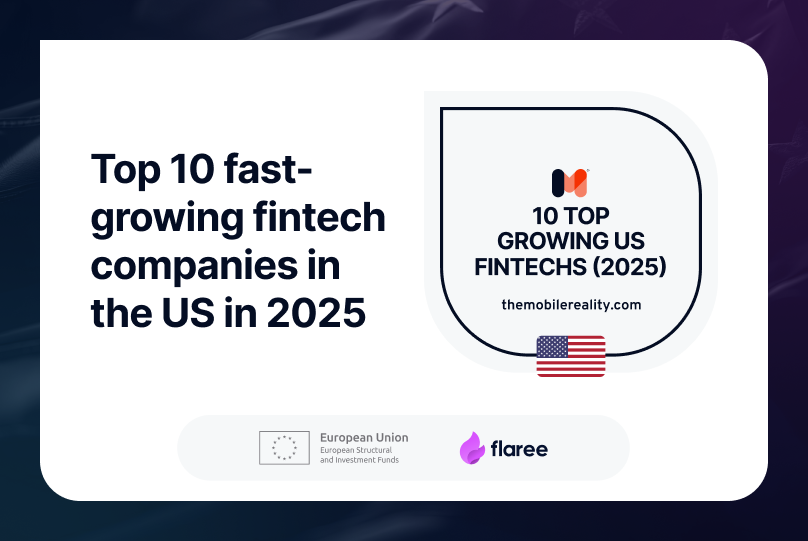Introduction
The recent explosion of interest in non-fungible tokens, or NFTs, has led to much discussion about their potential value as financial assets. While it's true that many NFTs have sold for eye-popping sums of money, it's important to remember that the actual value of NFTs goes far beyond their monetary worth.
In Mobile Reality, we’ve created a new way of benefit for employees that value increases over time called Flaree. You can find more of our articles about NFT in our blog.
One of the critical benefits of NFTs is that they allow for actual digital ownership. In the past, digital assets like images, music, and videos could be easily copied and shared, making it difficult for creators to protect their work and earn a living. NFTs use blockchain technology to ensure that each digital asset is unique and cannot be replicated, allowing creators to monetize their work and maintain control over it.
Another critical aspect of NFTs is their ability to foster community and connection. By buying an NFT, a collector acquires a unique digital asset and becomes a part of the community surrounding that particular piece. It can be compelling for artists, who can use NFTs to build a direct connection with their fans and supporters.
Start of NFTs mainstream
Most people outside the world of blockchain and cryptocurrencies probably first learned about non-interchangeable tokens, or NFT, in March 2021, when Christie's auction house sold a work called "Every day's – The First 5,000 Days" - a collage by an artist known as Beeple (his real name is Mike Winkelman), for a staggering sum in 69 million US dollars.
This sale made Beeple, unknown in the traditional art world, one of the most expensive living artists. It caused puzzling news headlines and led to speculative hype on the NFT platforms.
Despite the collapses that affected the cryptocurrency market, this gold rush continues. But regardless of the market, the NFT has already influenced the course of art history. Many experts in the field of digital art consider the colossal price for Beeple's work (which no NFT sale has even come close to since then) to be a continuation of development that can be traced back to the middle of the last century.
"We were all caught off guard by such high prices for NFT, but probably in vain," said Alfred Weidinger, director of the Oberösterreiches Landesmuseum in Linz, Austria. "There is nothing new in digital art. It is constantly evolving, and even NFTs have been around for some time."
One of the museums that Weidinger curates, Francisco Carolinum in Linz, celebrates the 95th anniversary of Herbert W. Franke, a pioneer in computer art, with an exhibition and an NFT sale in favor of his foundation. This Austrian pioneer, a science fiction writer and physicist, created an abstract algorithmic object art on a computer in the 1960s.
ART or not ART?
It is essential to understand that NFTs are not works of art. NFT is simply a token or certificate with a unique code protected by the blockchain protocol, a technology for storing and transmitting data designed to be transparent and secure simultaneously. The most commonly used protocol is Ethereum. The NFT can be attached to any form of information: a house ownership certificate, a concert ticket, an Internet meme, or a photo of your cat. Or even to a message on a social network – a few days after the sale of Beeple, crypto entrepreneur Sina Estavi paid $2.9 million for the NFT of the first tweet of Twitter CEO Jack Dorsey (Estavi tried to resell it with a considerable profit a year later, but failed: the highest bid was $ 6,800).
However, using NFT in the art world aroused the most significant interest. From the artist's point of view, tokenization is a way to turn a digital work of art that can otherwise be replicated endlessly into a unique object that, as such, can be sold and collected. It already has far-reaching consequences, opening up a world of new opportunities for artists working in the digital sphere.
Value of NFTs
Beyond the financial and community-building benefits, NFTs also have the potential to change the way we think about art and ownership. In the traditional art world, ownership is often synonymous with possession. But with NFTs, it's possible to own a digital asset without physically possessing it. This opens up new possibilities for how we think about and interact with art and could lead to a more democratized and inclusive art world.
Museums have also joined the NFT and started selling tokens of classical works to raise money in the face of a shortage of funds in the era of the pandemic. For example, last year, the Uffizi Gallery in Florence sold the works of Michelangelo's Madonna Doni to the NFT for 140,000 euros. But, as Weidinger noted, this is not a sale of works of art. He compared such tokens to "fridge magnets."
Ball also called them costly gadgets from museum stores. "Museums use a certain window that will close because people will realize that it's not very interesting," he said. "They forge iron while it's hot."
Perhaps this window is already closing: The Belvedere in Vienna offered 10,000 NFT with fragments of the painting "Kiss" by Gustav Klimt on Valentine's Day this year. According to local press reports, less than a quarter of it had been sold by the beginning of May. The prices on the secondary market were lower than the original price of 1850 euros.
According to Weidinger, only some museums have acquired NFT digital art for their collections. However, his museum is the only one in Austria that has received them. Another notable exception is the ZKM (Center for Art and Media) in Karlsruhe, which acquired the NFT in 2017, four years before the sale of Beeple, and is now showing them at an exhibition called "Crypto Art: It's Not About Money."
And yet it was money – in huge quantities – that first attracted the general public's attention to the NFT. The sale of Beeple, according to Weidinger, served as a wake-up call, meaning that finally, "museums are catching up and doing their homework in the field of digital art."
Conclusion
NFTs offers a new way for creators to monetize their digital work, allowing them to sell unique, one-of-a-kind digital items that cannot be replicated or replaced. It will enable creators to establish ownership and provenance of their work, which is particularly important in the digital age, where art can be easily copied and distributed.
In addition to providing a new revenue stream for creators, NFTs also have the potential to democratize the art world. By making it possible for anyone to create and sell digital art, NFTs have the potential to level the playing field for up-and-coming artists and creators who may have previously been excluded from the traditional art world.
Another critical aspect of NFTs is that they can be used to create and support communities. NFTs can be used to create digital collectibles that fans can buy and trade, making sense of ownership and community among fans.
In conclusion, while money is certainly a part of the NFT conversation, it is not the only aspect. NFTs offers a new way for creators to monetize their work, democratize the art world, and create communities around digital collectibles. It is essential to keep these other aspects in mind when discussing NFTs and their potential impact on the planet.
Of course, the NFT market is still in its infancy and will likely continue to evolve and change over time. But as it does, it's important to remember that the actual value of NFTs goes beyond their monetary worth. They can change how we think about digital ownership, foster connection, and community, and open up new possibilities for the art world.
Flaree is the first employee benefits program employees based on NFTs and blockchain technology. The Flaree allows HR departments and company owners to create and mint branded NFTs as employee benefits and rewards.
Web3 and Blockchain Development Insights
As the blockchain landscape continues to grow, it's clear that the value of NFTs and Web3 technology extends far beyond mere monetary worth. At Mobile Reality, we're at the forefront of exploring the potential of these technologies. We invite you to peruse our detailed articles that offer rich insights into the world of Web3 and blockchain software development:
- The Merge - How Ethereum Will Use 99,5% Less Energy
- What are the benefits you can get by buying an NFT?
- Guide to NFTs: When and how to invest in NFTs
- Guide to NFTs: When to mint own collection?
- Web3 & NFT roller-coaster and analysis
- Top 10 Web3 Blockchain Real Estate Companies
- Blockchain Web3 Music Companies you Should Know in 2025
- Leveraging Blockchain for Fintech: A Look Ahead to 2025
- Top Blockchain Conferences That You Cannot Miss in 2025
- Maximize Your NFT Marketplace Development in 2025
- DePIN: Power of Blockchain for Infrastructure Networks
These resources are curated to broaden your understanding and inform your decisions in Web3 and blockchain. By the way, Mobile Reality has been recognized as one of the top blockchain development companies by Vendorland. Contact our expert sales team for potential collaborations if you consider venturing into NFTs, blockchain, or web3 development. For those aspiring to be part of our innovative team, we encourage you to explore career opportunities on our careers page. Join us as we delve into the transformative world of blockchain technology!





